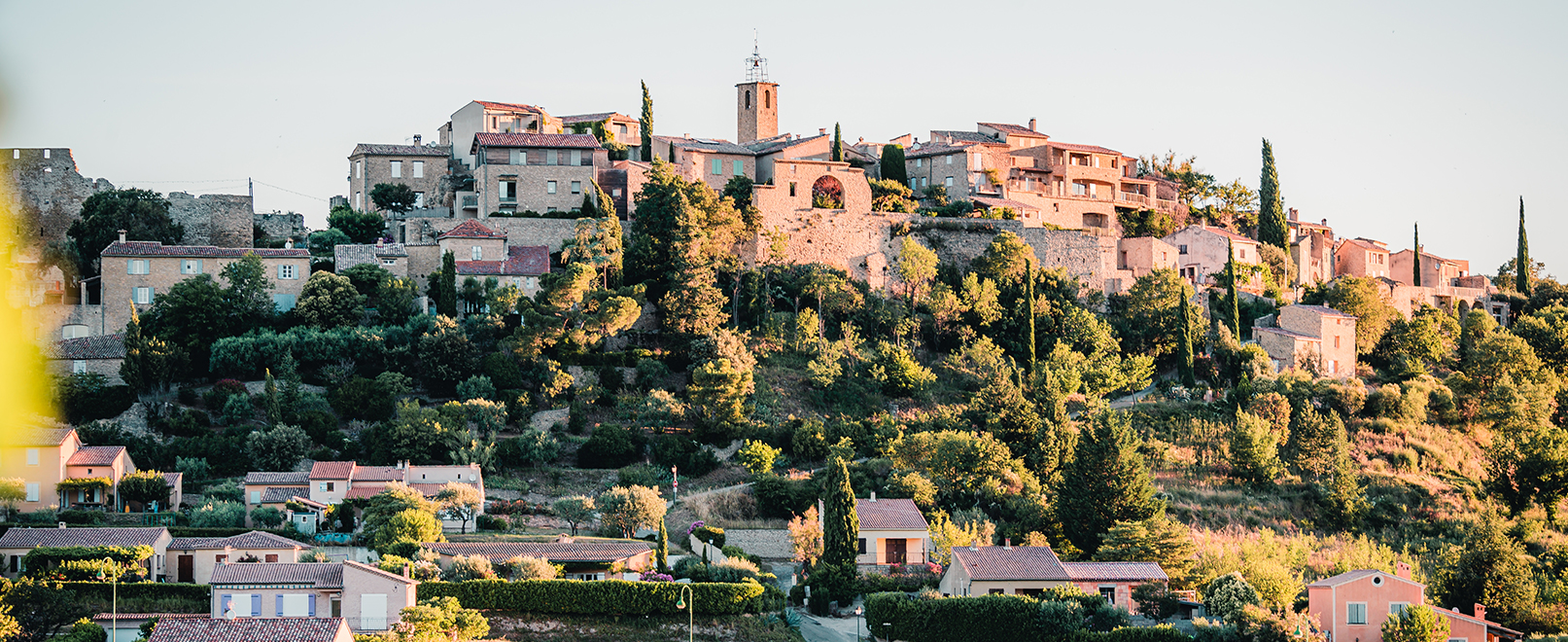
Story Ideas
On the subject of Vaucluse
We have chosen to briefly present the main assets of our region, sometimes in a traditional style, sometimes from a more original angle. Of course, these are only suggestions. Every idea can then be personalized according to your wishes and interests, the season and the availability of what’s on offer. Each theme can also be combined with others.
Summary of Ideas
- Vaucluse – the essentials
- Lavender
- 48 hours in Avignon – Girls’ trip
- Vaucluse by water
- Former Papal Territories
- 48 hours in Avignon – Cultural trip
- Ochre landscapes
- The Popes’ Jews
- 48 hours in Avignon – Gourmet trip
- Ways of life in Roman times
- Slow down and unwind in Vaucluse
- Vaucluse by mountain bike
- Dry-stone architecture
- Flavours of Provence
- Vaucluse by bike
- Organic Vaucluse
- Black Truffle
- Mont Ventoux, a myth for cyclists
- Explore the vineyards
- Herbs
- Cavaillon melon
- Vaucluse – Land of artists
- Nougat and candied fruit
- Antique dealers and artisans
- Famous men and women of Vaucluse
- Gardens of Provence
- Industrial Heritage
- Christmas in Provence
- Vaucluse with the family
Vaucluse – The Essentials
Avignon, L’Isle sur la Sorgue, the hilltop villages of the Luberon and the Mont Ventoux, Vaison-la-Romaine, Châteauneuf-du-Pape, Orange…
An overview of the rich historical heritage, natural sites, and the art of living in Vaucluse.

On the programme
Maybe a few too many things – you’ll have to choose!
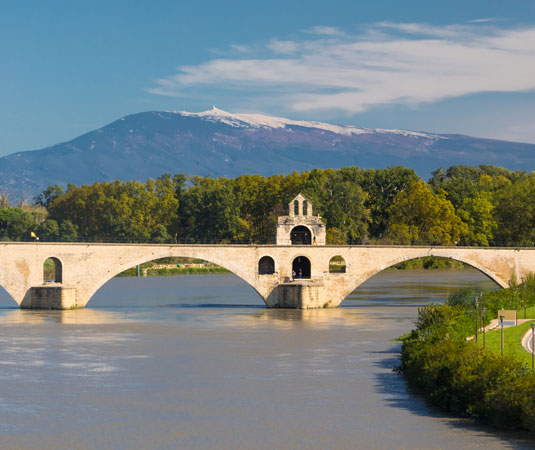
Lavender
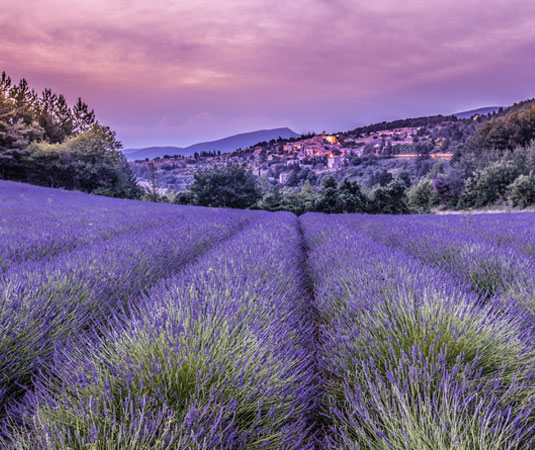

On the programme
Meet lavender growers, visit distilleries, harvest lavender and extract its essential oils, stroll along paths bordered by lavender, see the collection of stills at the Lavender Museum and take part in their sensory painting workshop, explore lavender as an ingredient in gastronomy…
From the end of June to mid-August, depending on the year, fine lavender and lavandin bathe the countryside in amethyst blue and diffuse their heady aroma across the hills of the Sault Valley, over the Claparèdes plateau in the Luberon, and around Valréas in the Enclave of the Popes.
Vaucluse by water
The presence of water in Provence comes as a surprise – yet in Vaucluse, it certainly flows! Mont Ventoux acts as a reservoir and supplies springs and rivers, in particular the Sorgue which gushes from Fontaine de Vaucluse – one of the most powerful resurgences in Europe.
From Fontaine de Vaucluse, the river ducks in and out of view, flowing beneath the tunnel of greenery formed by plane trees and alders, until it reaches the town of L’Isle-sur-la-Sorgue. Originally a fishing village, built on a criss-crossing of rivers and canals, it is appropriately named “la Petite Venise” (‘Little Venice’). The waterwheels that continue to turn on the water recall the town’s past as a thriving textile industry.
Fountains and wash houses are another key feature – the village of Pernes-les-Fontaines bears testament to this with its 40 fountains.
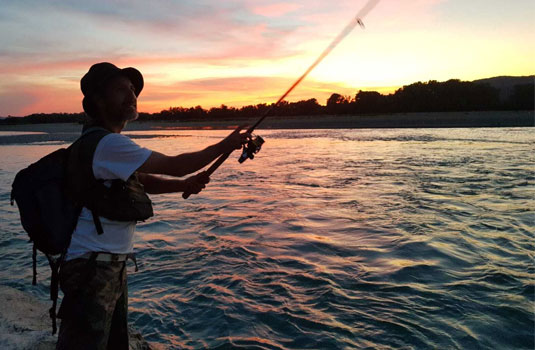

On the programme
The chasm at Fontaine de Vaucluse, a traditional water-powered paper mill, L’Isle-sur-la-Sorgue, Pernes-les-Fontaines. Subject to conditions: introduction to fly fishing, meet a manufacturer of the Nego Chin (traditional flat-bottomed boat).
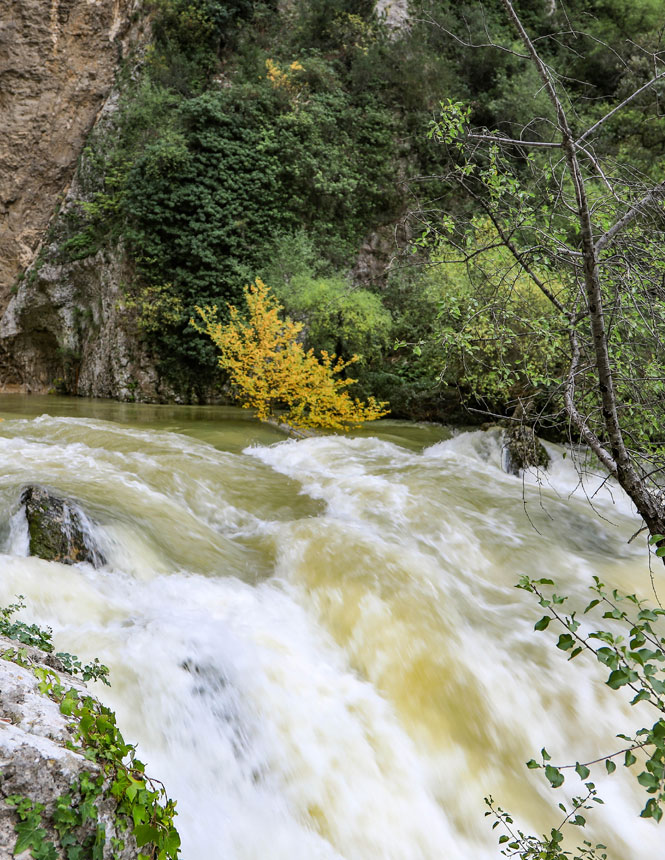
Former Papal Territories
It was in the 14th century that the history of Vaucluse took a completely unexpected turn thanks to an extraordinary occurrence: the establishment of the Papal Court in Avignon.
Seven Popes reigned here over the course of the next century and they changed the face of the city. This transformative effect extended far beyond the city walls, throughout the territory which would remain the property of the Holy See for 400 years, as an Enclave in the Kingdom of France…

On the programme
The historic centre of Avignon and the Popes’ Palace, classified as UNESCO World Heritage sites, Châteauneuf-du-Pape, the summer residence of the Supreme Pontiffs, the heritage of the Pope’s Jews… The Plague Wall (‘mur de la peste’), built to protect the Papal Territories from the terrible plague that arrived in Marseille and subsequently ravaged Provence…
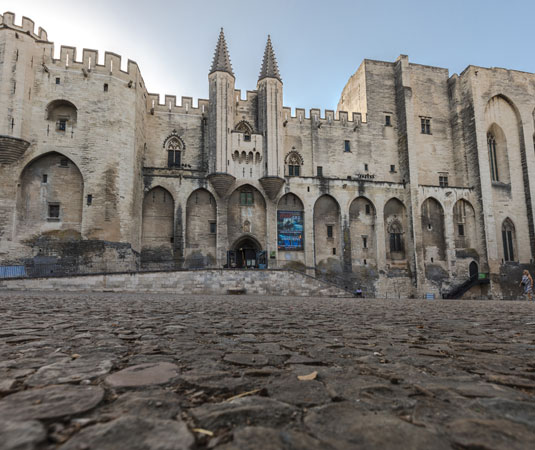
Ochre landscapes


On the programme
The village of Roussillon and the Ochre Trail, the Okhra Conservatory of Ochre – the former Mathieu Ochre factory, the underground Bruoux Mines in Gargas, hiking or cycling. Chance to meet the last ochre miner in France, or a craftsman who uses the pigments.
The Luberon’s ochre sites are the result of a combined work of man and nature. Ochre mining, which was a thriving industry in the 19th century, shaped these landscapes and brought colour to the facades of houses. The former open-air quarries create landscapes rich with fiery colour.
To better understand the industrial history of the Pays d’Apt, the Conservatory of Ochre is a must-see. It’s housed in a former factory where you can still see wash basins, settling tanks, ovens…
Pedestrian pathways and a signposted cycle route allow you to experience this wonder of nature up close.
The Popes’ Jews
In 1307, Philip the Fair, the King of France, drove the Jews out of the country, and at the end of the 15th century it was King Charles VIII who drove them out of Provence. Only the Comtat Venaissin, then the Papal Territories, remained open to them. Yet this tolerance was purely relative…
A fascinating story that continues to be told today.

On the programme
Carpentras synagogue, the oldest in France (1367), its bakery and mikveh; Cavaillon synagogue (1494), now the Judeo-Comtadin Museum; Avignon synagogue, re-built in the 19th century; the mikveh of Pernes-les-Fontaines; the «carrières» – former Jewish quarters.
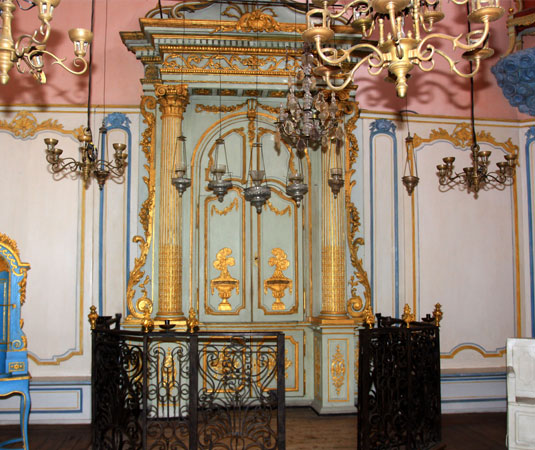
Ways of life in Roman times
In the 1st century BC, the Romans came across this sun-kissed land, where they recognised the vines and olive trees planted by the Greeks, made a pact with the local people and fought against fierce Germanic tribes.
They had earned the right to settle in this land blessed by the gods. Their genius construction abilities opened new roads and covered the region with cities and monuments: Orange, Vaison la Romaine, Cavaillon, Apt…
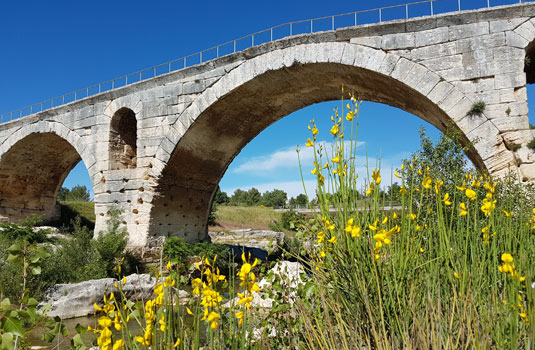

On the programme
Orange – its Triumphal Arch and Roman Theatre, which is the best preserved in Europe, both of which are classified as UNESCO World Heritage sites. Vaison-la-Romaine – a vast archaeological site, and its museum of Roman life; the Pont Julien in Bonnieux, on the Via Domitia…
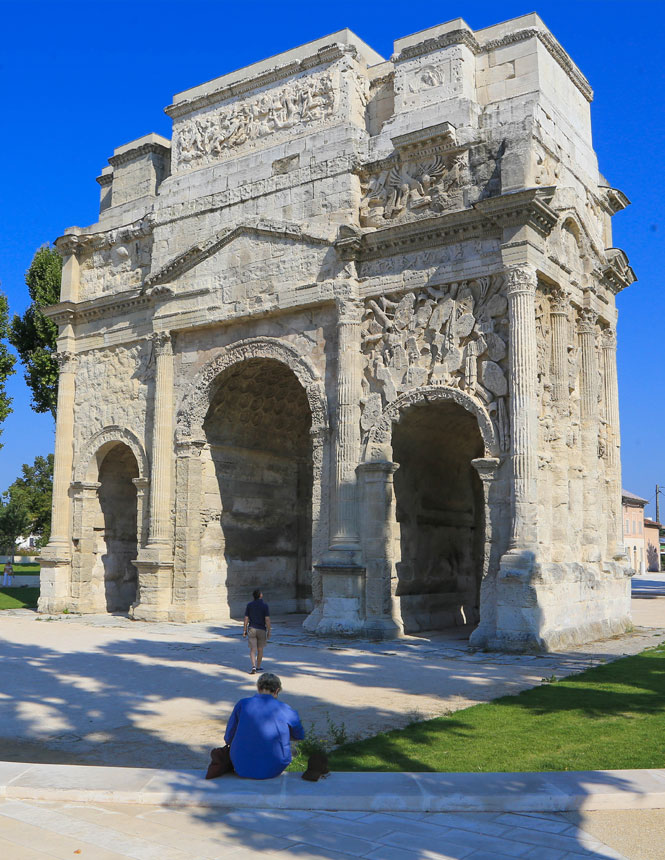
Slow down and unwind in Vaucluse
Learn how to make your own organic cosmetics, how to recognise edible wild plants and naturally cook them, discover the manufacturing process and uses of essential oils, relax in an organic spa near the Uchaux mountain range, enjoy a bike ride along a signposted route, watch the sun set over the Dentelles de Montmirail…

On the programme
Organic cosmetics workshop, edible plant picking and cookery class, a stay in an environmentally friendly château with state-of-the-art organic spa, evening stroll and picnic in the Dentelles de Montmirail…
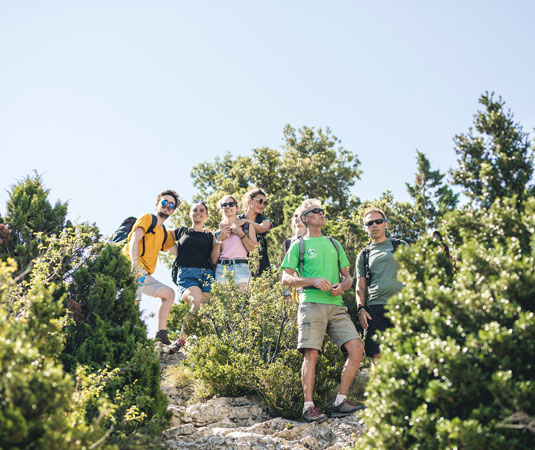
Dry-stone architecture
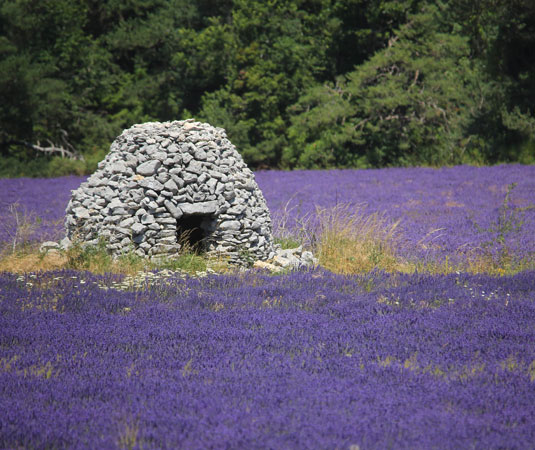

On the programme
The magnificently restored ‘bories’ village in Gordes, the romantic ruins of the Enclos des Bories in Bonnieux, the Plague Wall – built to protect the Papal Territories from the terrible plague that was ravaging Provence, the ‘Terrasses’ Conservatory in Goult, a hike in hilly Fontaine-de-Vaucluse…
UNESCO Intangible Cultural Heritage
This technique, which involves piling up stones without any binder to hold them together, is used in several countries in southern Europe, but it is particularly common in Provence. The rugged landscapes and the need to remove stones from the soil in order to cultivate it soon made this land the ideal place for dry stone architecture.
The stones were used day after day to build kilometres of low walls, «restanques» (dry stone terraces), enclosed plots of land, «aiguiers» used as a natural cistern for irrigation of the land, and thousands of huts that are known as «bories». The Luberon Natural Regional Park counts no less than 1,610.
Flavours of Provence
The range of produce in Vaucluse is as varied as it is brilliant, thanks to natural abundance: Carpentras strawberries, Cavaillon melon, AOP Côteaux du Ventoux cherries, einkorn wheat and other old wheats reintroduced in the Luberon Park, lamb from Sault, Ventoux pork raised in the open air, Piolenc garlic, Caromb fig, olives and olive oil, AOP Muscat du Ventoux grapes, saffron, black truffle, herbes de Provence and other herbs, almonds, nougat and candied fruit…
Vaucluse cuisine is both simple and inventive, and the chefs here are authentic innovators, whether they feature amongst the Department’s 10 or so Michelin-starred chefs, or serve up their dishes in local bistros.
And then there are the weekly or farmers’ markets, which are always warm, welcoming, colourful, and fragrant – all celebrating produce from the local area.
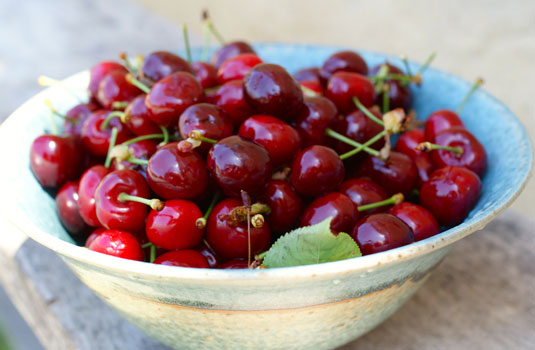

On the programme
Markets; meet the farmers, «paysans-boulangers» (farmer-bakers), artisans, and chefs; cookery classes… or write a story focused solely on one speciality.
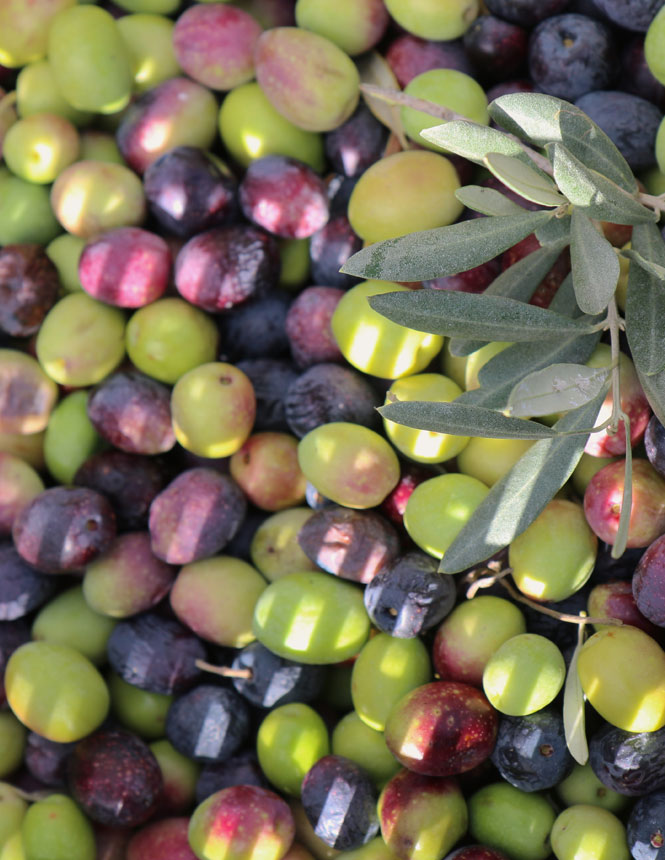
Organic Vaucluse
Vaucluse ranks as one of the top French Departments in terms of its organic farming.
It must be said that its incredible sunshine (300 days per year) certainly helps, as well as the mistral – the wind which blows through Provence and keeps the crops in an excellent state of health.

On the programme
Meet young agro-forestry farmers, biodynamic wine-growers, stay in a hotel with an entirely organic spa, make organic cosmetics…
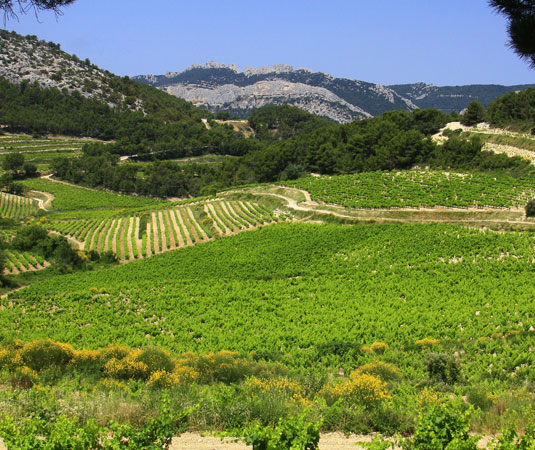
Black Truffle
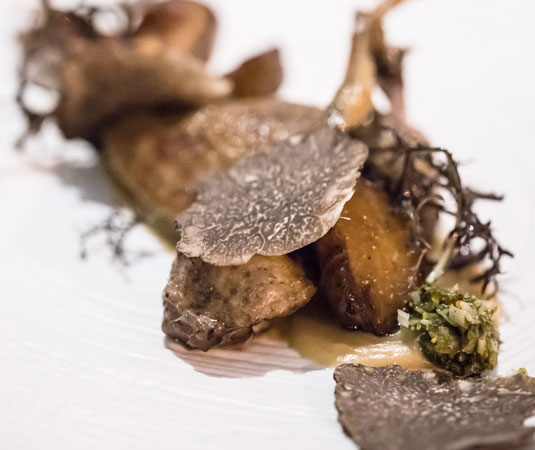

On the programme
Truffle hunting with a truffle-harvester, truffle market, cookery classes, truffle-infused meal, dedicated events depending on the time of year («Ban des truffes» – official opening of first truffle market in mid-November, Truffle Mass in mid-January, Truffle Festival in February etc.), visit France’s biggest truffle processor…
Vaucluse is one of the biggest French producers of Tuber Melanosporum, black truffle.
Contrary to popular belief, the majority of national production comes from South-East France (and not Périgord!).
Markets in Richerenches and Carpentras sell 70% of all market-sold truffles in France.
Explore the vineyards
Backing onto the Rhône river, Vaucluse boasts diverse vine-covered landscapes all along the different appellations of the southern Côtes du Rhône. There is of course the prestigious Châteauneuf-du-Pape, Gigondas, Vacqueyras, Beaumes-de-Venise, Cairanne… as well as the AOC Luberon and Ventoux.
Dating back thousands of years, the history of the vine is closely entwined with that of Vaucluse, ever since it was first planted by the Greeks. Then came the Romans, followed by the Popes who played a decisive role, not to mention that of the Rhône.
Naturally, we offer a wine-tourism centred approach to our vineyards, with their many grape varieties of which the Grenache reigns supreme.

On the programme
Meet the wine-makers, some of whom work in organic or biodynamic agriculture; try blending workshops; tasting workshops (wine & chocolate, wine and tea etc.); stay amongst the vines; explore the vineyards in a 4×4, on horseback or by electric bike; picnics; and, depending on the time of year, participate in the grape harvest and go to wine festivals (the official start of harvest, Véraison, vin nouveau etc.).
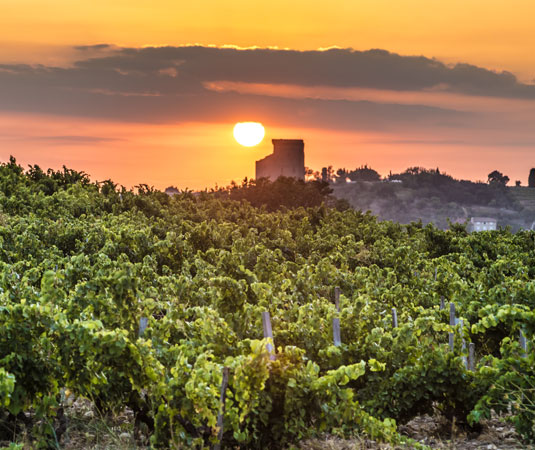
Herbs
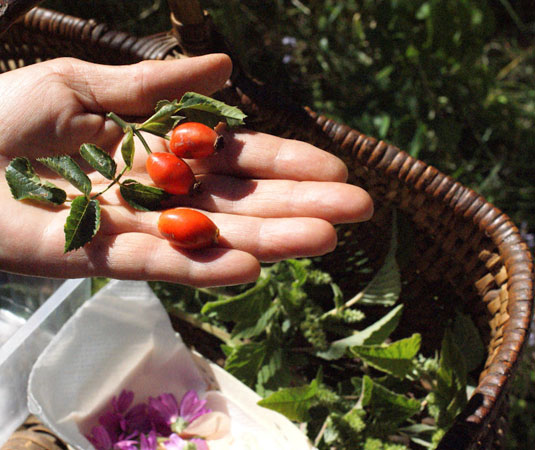

On the programme
Farms that specialise in growing herbs, distilleries, a walk to gather edible wild plants followed by cookery class, manufacturing of organic cosmetics made from the essential oils of these plants…
Wild herb-hunting
Cook with thyme, basil, savory and wild herbs…
Collecting herbs is an ancient practice. In Provence, it is an old tradition. Used for their medicinal properties, herbs are of course also used in food.
While the majority of herbs are found in their wild state, their cultivation, notably that of thyme and basil, represents a large part of the market. They can be found in the Luberon and at the foot of Mont Ventoux.
Cavaillon melon
It gave the town its reputation and should soon be awarded a well-deserved PGI (‘Protected Geographical Indication’). Celebrated writer Alexandre Dumas was so fond of it that he made a pact with the town council: he offered them 300 volumes of his work in return for a life annuity of 12 melons per year! In doing so, he helped found the public library.
Today, Cavaillon melon is still extremely popular. Hidden away in their kitchens and laboratories, Cavaillon’s pâtissiers, confectioners, wine merchants and chefs have developed specialities that honour the melon.
Like cherries, it is made into candied fruit, a speciality of Apt since the Middle Ages.
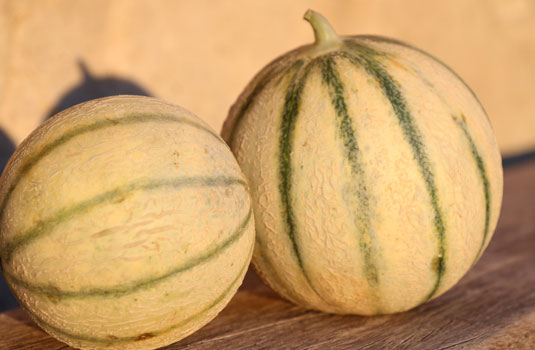

On the programme
Meet farmers, confectioners, or a specialist chef and sample the «tout melon» (nothing but melon) menu, cookery classes, the Melon Festival depending on the time of year.
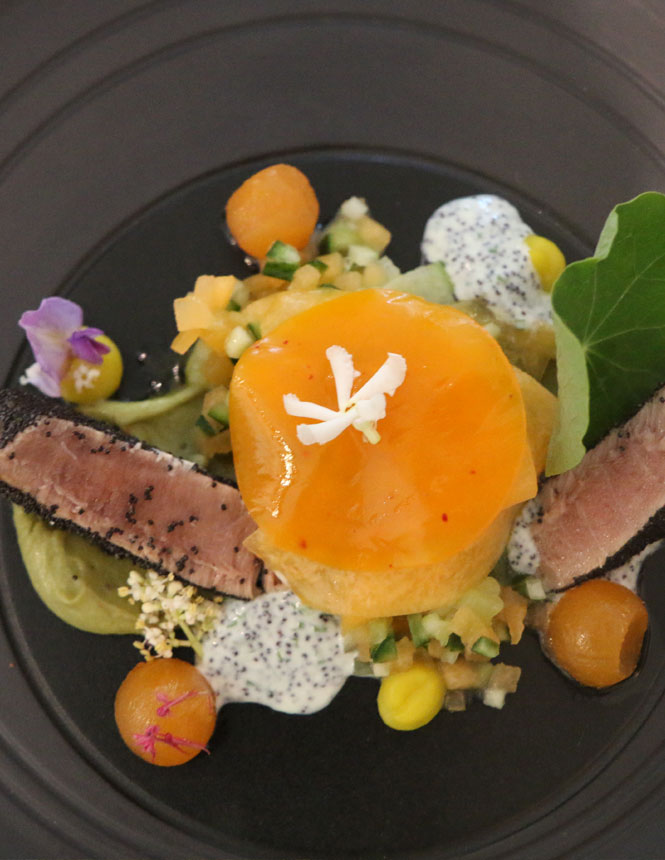
Vaucluse – Land of artists
Artists have long taken up residence in Avignon and the villages of Vaucluse, and the contemporary art scene continues to thrive.
Picasso, Dora Maar, Nicolas de Staël, Vasarely… All of these people found inspiration in the bright light and landscapes of Vaucluse. Collectors have opened foundations here and contemporary artists exhibit their works in the gardens which crown hilltop villages…

On the programme
The Lambert Collection in Avignon, Villa Datris in L’Isle-sur-la-Sorgue, the Blachère Foundation in Apt which features contemporary African art, the Art Maze in Joucas, Dora Maar’s house in Ménerbes, artists’ studios and gardens across Vaucluse, accommodation in the homes of art enthusiasts…
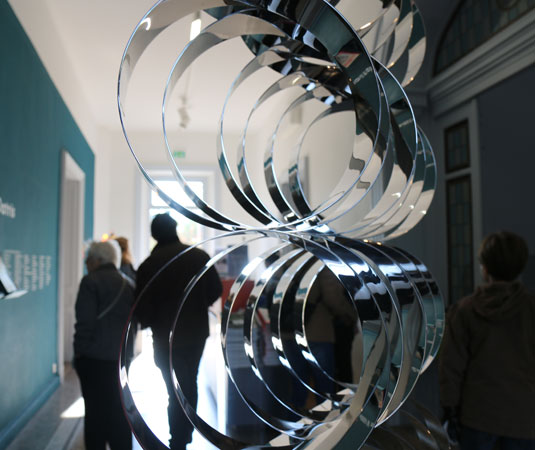
Nougat and candied fruit
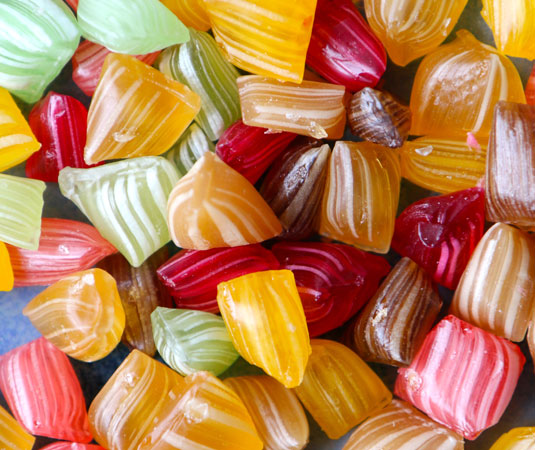

On the programme
Artisans of candied fruit, nougat, honey, berlingot…
Apt, the land of orchards, inherited the title of «Capital of candied fruit» thanks to a skill that dates back generations, registered since 2018 on the UNESCO list of Intangible Cultural Heritage in France. It also earned the town a place amongst the Sites of Remarkable Taste («Sites Remarquables du Goût»). The secrets of candied fruit-making are inscribed on the sides of the cooking pots that have been used by generations of confectioners to carry on the tradition.
A pastry-maker and confectioner born in Carpentras in the 19th century then came up with the idea to use the leftover syrup from the candied fruit to make sweets, and so the ‘berlingot’ was born, quickly becoming a local delicacy!
Using honey and almonds from Provence, nougat-makers create black and white nougat which are both included in the traditional 13 Christmas desserts.
Antique dealers and artisans
In L’Isle-sur-la-Sorgue, more than 350 second-hand goods traders, antique dealers and decorative artists gather throughout the year. This little market town attracts thousands of bargain hunters from across the world every weekend. Over time, designers, craftsmen and renowned factories have settled in this capital of antiques and second-hand goods, as well as in the surrounding villages – makers of high-end natural blankets, chandeliers, skilled metalworkers…
Beyond furniture, décor lovers can go and learn about coating, patina, and decorative paints at Okhra in Roussillon – a place entirely dedicated to the practice and use of natural colouring materials. Here, colour comes to life through handiwork and the passing on of craft skills.

On the programme
The ‘villages d’antiquaires’ (antique villages) in L’Isle-sur-la-Sorgue, the Filaventure museum, which explores the craft of the oldest spinning mill in France still active today, Mathieu Lustrerie (chandelier factory) in Gargas, meet designers and craftsmen, Okhra Conservatory of Ochre…
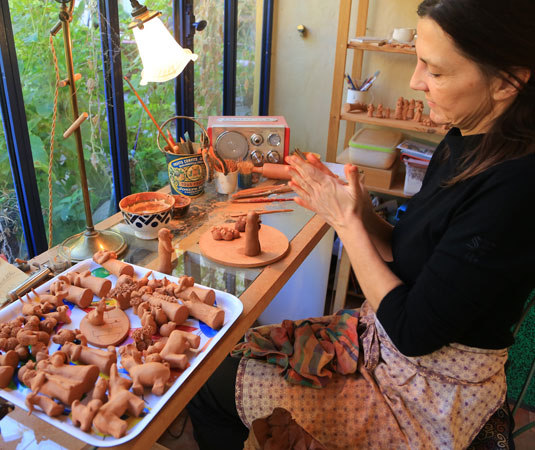
Famous men & women of Vaucluse
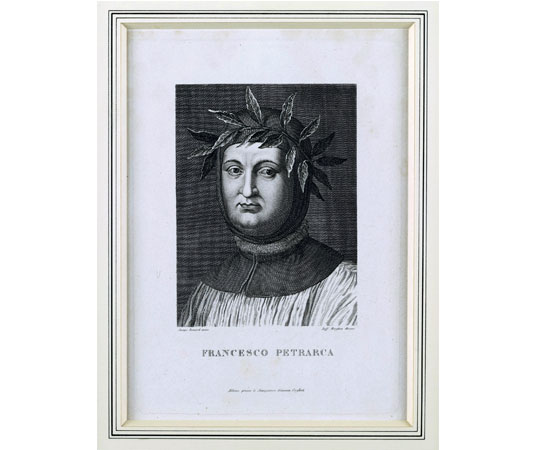

On the programme
The Petrarch Museum in Fontaine de Vaucluse and climbing Mont Ventoux; Dora Maar’s house in Ménerbes; the Lagnes landscapes painted by Nicolas de Staël and his home in Ménerbes (a private residence, where his son Jérôme now lives); visit Lourmarin château and cemetery, where Albert Camus and Henri Bosco are buried; stay in the house where Albert Camus spent several summers…
Following in the footsteps of Pétrarque, Dora Maar, Nicolas de Staël, Albert Camus, Henri Bosco, Frédéric Mistral…
Gardens of Provence
Rare plants, ancient vegetables, staked fruit trees, colourful plants updated to suit modern tastes, delightful walks in gardens classified as ‘Remarkable’, and the Harmas of famed entomologist Jean-Henri Fabre.
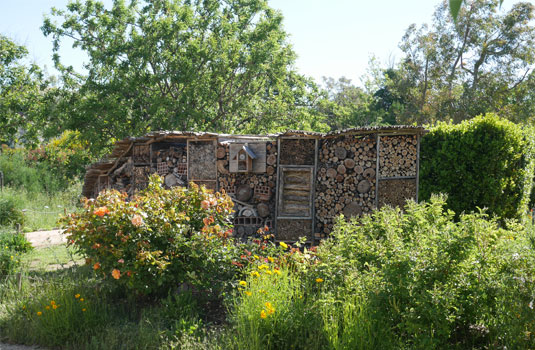

On the programme
Remarkable Gardens including Val Joanis, Jardins de la Louve, the garden of dye plants in Lauris, Château de Brantes, the Harmas of Jean Henri Fabre. Optional: plant distillery, cookery class using edible wild plants, Rare Plants and Natural Gardens Festival or other plant festivals depending on the time of year, accommodation with beautiful gardens (depending on availability)
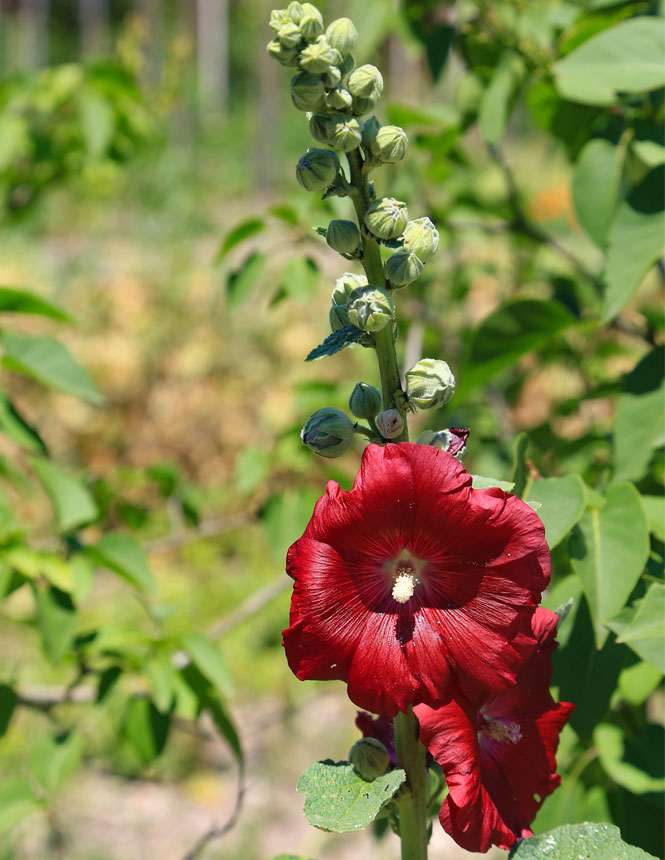
Industrial Heritage
Rue des Teinturiers, rue des Ocriers, route de la Garance… The names of the streets in the towns and villages of Vaucluse reveal a rich industrial past which contrasts with the sometimes agricultural, sometimes cultural image of the Department. Weaving and fabrics in L’Isle-sur-la-Sorgue and Avignon, stationery in Fontaine-de-Vaucluse and Malaucène – these industries owed their development to the clear waters that run through the valleys.
Cultivation of madder, which was imported by Jean Althen; mulberry tree plantations for silkworm farms; mining of the Luberon’s ochre; distilleries which produced absinthe and pastis, candied fruits… Today, we still find traces of these skills. Finish your visit with a 20th-century masterpiece: the impressive hydro-electric dam in Bollène, on the Rhône, now open to visitors.

On the programme
Visit Filaventure, the museum of France’s oldest spinning mill still active today, and meet the 8th generation of wool-workers; visit the Conservatory of Ochre; meet France’s last ochre miner; visit the Cardboard and Printing Museum , linked with the silk industry; visit a distillery; visit the National Company of the Rhône (CNR) dam in Bollène… Stay at a former silkworm farm.
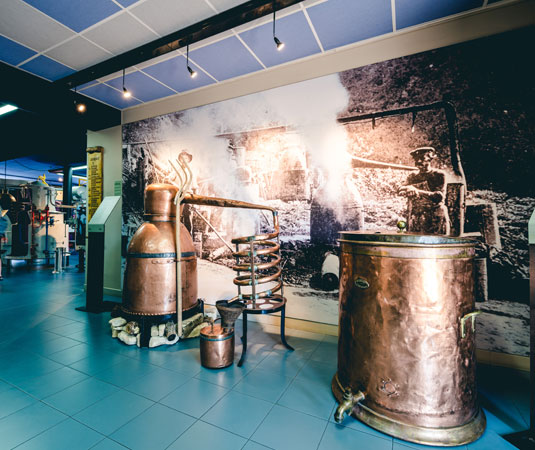
Christmas in Provence
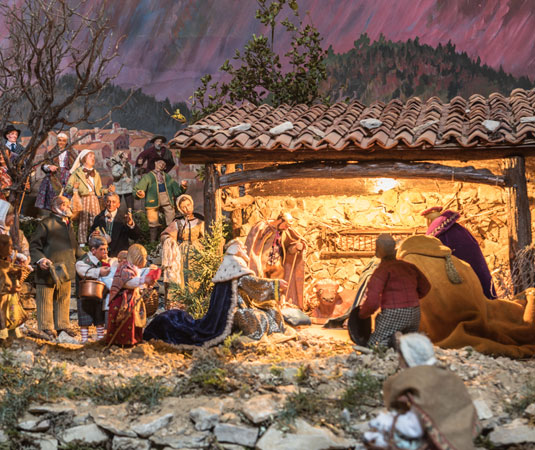

On the programme
Visit the santon-makers’ workshops, meet a nougat maker, ‘santon’ fair, Christmas markets, visit Nativity scenes, the House of Candied Fruit in Apt…
Known as «fêtes calendales», Christmas celebrations in Provence begin on the 4th December with Saint-Barbe and end on 6th January with Epiphany. During this 40-day period, Christian and Pagan traditions come together in Provence.
Santons (nativity figurines) come out of their boxes, santon-makers put on displays, crèches (nativity scenes) bring churches to life, nougat-makers and confectioners get to work on the famous thirteen desserts…
Vaucluse with the family
Thrill-seekers will be rushing to try the attractions at Parc Spirou or the water slides at Wave Island, little ones will be amazed by the farm animals or will head off on a walk with a donkey, adventurers will try a treetop adventure course or dévalkart (downhill go-karting) on the slopes of Mont Ventoux, nature lovers will sign up for a workshop on insects or bats at Naturoptère, creative types will find out about the blend of natural pigments at the Conservatory of Ochre in Roussillon… There’s something to suit all tastes and all ages!
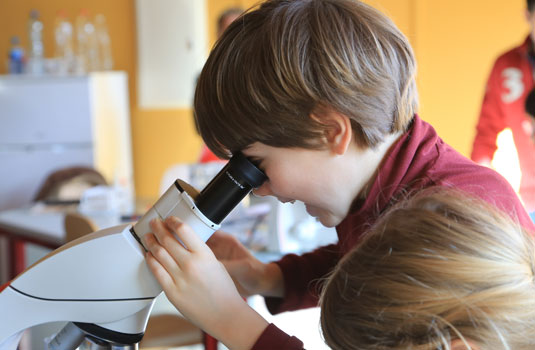

On the programme
Half a day at Parc Spirou or Wave Island (depending on the season), treetop adventure course, canoe or kayak on the Sorgue, visit a farm or the Butterfly Farm, discover Jarditrain, dévalkart on Mont Ventoux, discover the world of insects at Naturoptère and try a workshop (depending on the time of year), walk through the ochre landscapes of Roussillon and go to a workshop at Okhra – Conservatory of Ochre in Roussillon, spend the night at a campsite off the beaten track…
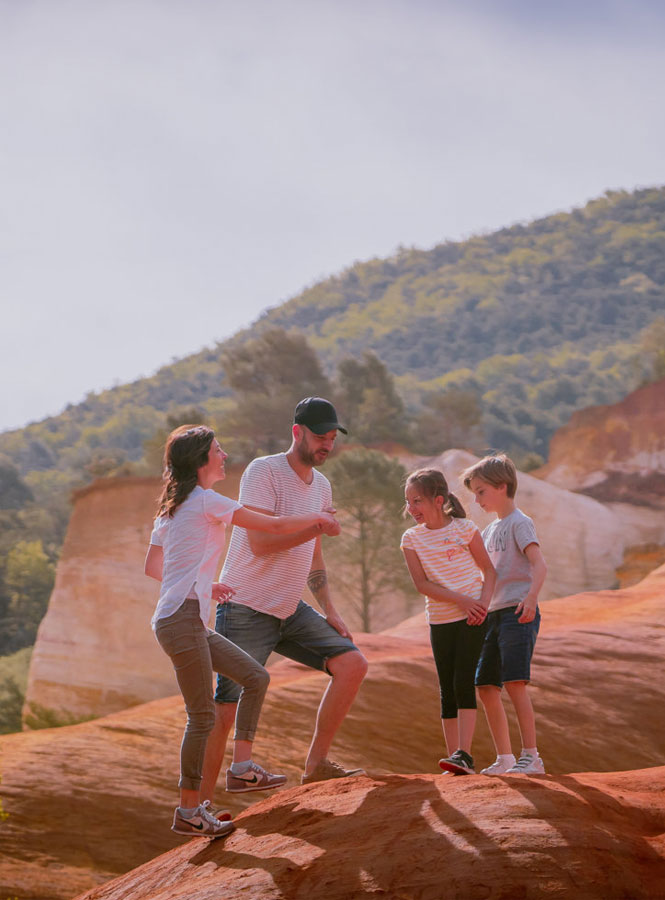
48 hours in Avignon – cultural trip
Of course there’s the Pont d’Avignon and the Popes’ Palace, which can be explored thanks to the interactive ‘Histopad’ tablet, or as part of one of the guided visits offered by the Tourist Office. Entry is now free to the city’s museums; see Picasso and Van Gogh paintings as you browse the rooms of the mansion that houses the Angladon Foundation, and then see Yvon Lambert’s unique collection of contemporary art, where icons bask in the light-filled 18th-century Caumont and Montfaucon townhouses.

On the programme
Take a tour of the city’s various monuments and sites, have lunch in a museum courtyard, go on a trip to the other side of the Rhône to Villeneuve-les-Avignon, stay in a townhouse within the city walls…
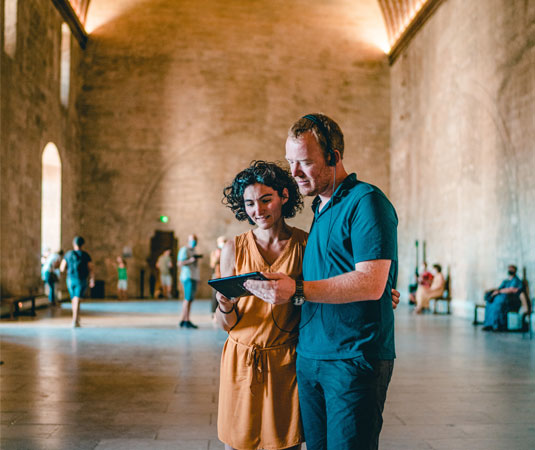
48 hours in Avignon – Girls’ trip
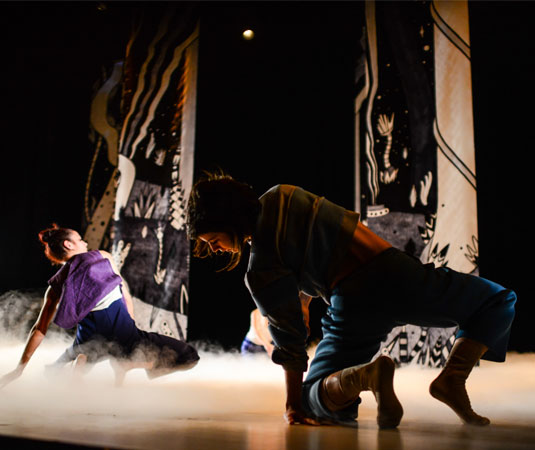

On the programme
Cookery classes at Avignon’s Les Halles market; yoga classes at a museum (depending on availability); make-your-own cosmetics workshop; tea break in a 5-star hotel; dinner with wine aboard a barge on the Rhône; visit a museum; explore the boutiques of the «Fabricateurs d’Avignon», a community of artisans, designers and galleries selling unique items.
Yoga, cookery classes, tea and cake break in the sumptuous setting of a 5-star hotel, designer shops… Avignon is full of surprises for those curious enough to explore its streets!
48 hours in Avignon – Gourmet trip
On the left bank, the right bank, Barthelasse Island, and even on the Rhône, there’s no shortage of opportunities to explore Provençal gastronomy and the wines of the Côtes du Rhône’s capital!

On the programme
Explore the indoor market of Les Halles in Avignon; cookery class; dinner in a Michelin-starred restaurant or prepared by a young gastronomic prodigy; tour a distillery and taste its spirits; visit an olive oil mill; tasting workshop at the Ecole des Vins (wine school); go to a wine bar in one of Avignon’s townhouses or on a barge; see a mushroom farm in a cellar in the city centre; meet a ‘utopian’ baker or one of France’s best coffee roasters; go on a half-day excursion to the Châteauneuf-du-Pape vineyards…
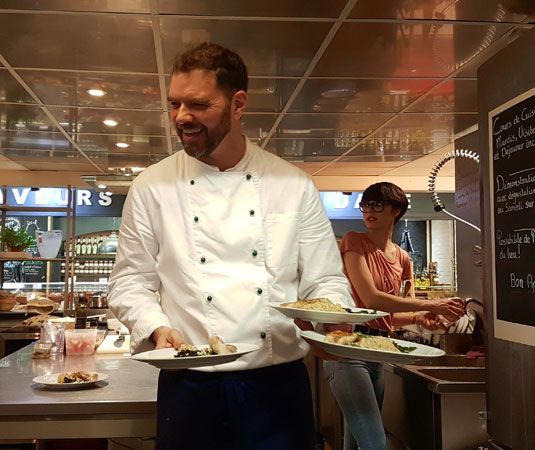
Vaucluse by mountain bike
For the biggest risk-takers and lovers of long-distance biking routes, there is the Vaucluse Long Distance Trail – a legendary route that passes through a wide variety of landscapes, from the Ventoux to the Luberon via the Monts de Vaucluse. A version for electric mountain bike is possible, for those who prefer to avoid the section where it is necessary to carry your bike.
The region lends itself to all types of biking – cross-country, all-mountain, enduro, raid, electric mountain biking, family mountain biking… All year round.
In addition, Vaucluse boasts 2 mountain biking zones (‘Espace VTT’) accredited by the French Cycling Federation: 250 km and 13 loops of 10 to 40 km in the Ventoux, and nearly 1,000 km soon to be signposted in the Luberon, accessible to all.
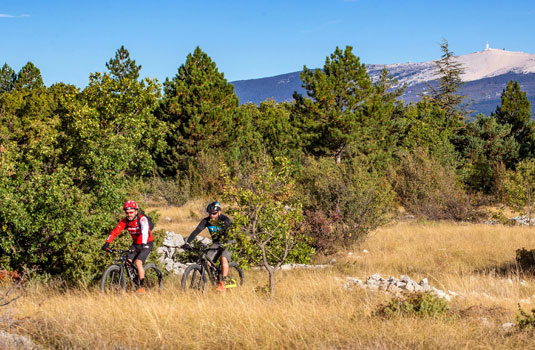

On the programme
A patchwork of landscapes and environments – limestone cliffs, green valleys, ochre sands, vineyards surrounding the Dentelles de Montmirail, climbing on the wooded foothills of Mont Ventoux, mountainous ridges and peaks… Depending on the date of the press trip, mountain bike events are held in May and October. Accommodation and services with qualified professionals who are certified cyclist-friendly with the ‘Accueil Vélo’ label, plus the comfort of a network of Bosch charging stations across the territory.
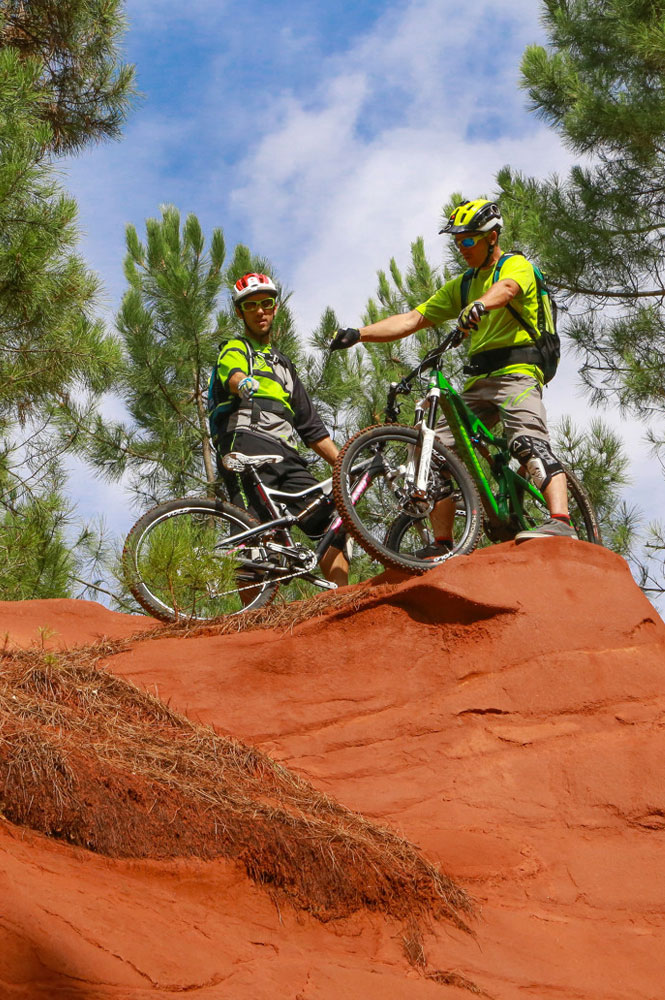
Vaucluse by bike
Leaving Mont Ventoux to the sporty ones, the country lanes of Vaucluse are reserved for families and nature-lovers. Across hills and plains, the little country roads and reserved cycle lanes, combined with the ideal Mediterranean climate, are perfect for bikes.
To make the most of these advantages, much of Vaucluse is connected by signposted cycle routes that you can ride along for several hours or several days, and the Department has also worked to make professionals mindful of a cyclist-friendly welcome with the «Accueil vélo» label. In addition, the department is included in big European itineraries such as the Via Rhôna and the Mediterranean by bike.

On the programme
Cycle on your road bike or electric bike along shared signposted routes or devoted cycle lanes, for a day, a half-day, or an extended trip; possibility of organising themed routes(vineyards, ochre, lavender…) or geographic circuits (the Luberon, around Mont Ventoux, Via Rhôna etc…).
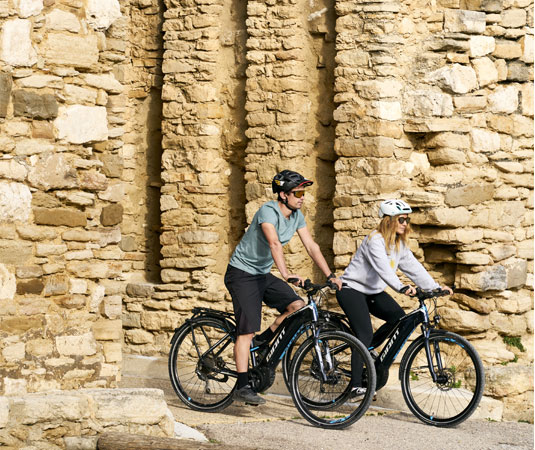
Mont Ventoux, a myth for cyclists
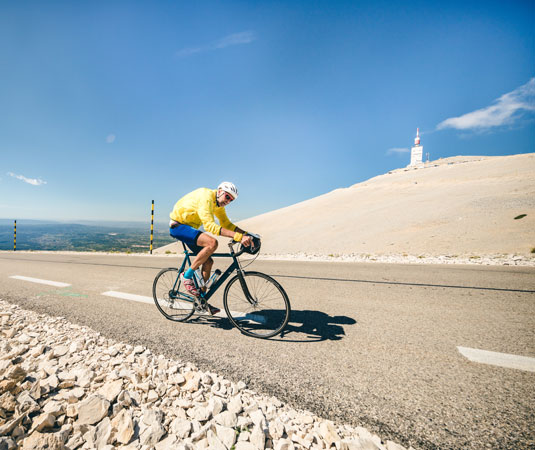

On the programme
Meet cyclists, Ventoux bike rental companies, or former professional cyclists from Vaucluse; climb Mont Ventoux by road bike or electric bike, stop at the Tom Simpson memorial, meet the historians of Mont Ventoux…
With the Mont Ventoux rising from the centre of the Department, Vaucluse makes no secret of its love for cycling. A challenge for amateurs, the «queen» stage for professionals, this prestigious name is known throughout the cycling world.
For visitors seeking a feast for the eyes and a sporting challenge, Mont Ventoux offers an inexhaustible choice of cycle routes. Some involve hopping on your mountain bike to explore little signposted paths, whilst others invite you to attempt the summit by road, a 54km-round trip starting in Bedoin and following a route that has featured in the Tour de France.